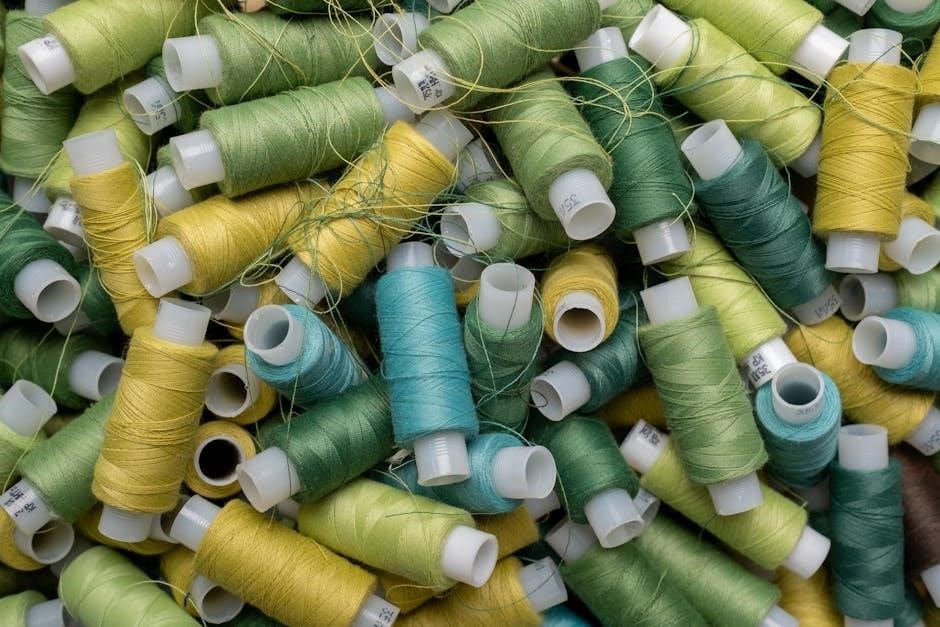embroidery thread color chart pdf
An embroidery thread color chart is a visual guide displaying thread colors, helping embroiderers match hues and plan projects․ Available as PDFs, these charts simplify color selection and coordination, ensuring precise thread-to-fabric matching for stunning embroidery results․
1․1 What is an Embroidery Thread Color Chart?
An embroidery thread color chart is a visual guide that organizes embroidery thread colors by families, shades, and codes․ It typically includes color swatches, numbers, and names, making it easier to identify and select threads․ Available in PDF formats, these charts are downloadable and printable, offering embroiderers a convenient way to plan and coordinate colors for their projects․ They are essential for matching thread hues to fabric and ensuring consistent color accuracy in embroidery designs․
1․2 Importance of Color Charts in Embroidery
Embroidery thread color charts are indispensable for ensuring color accuracy and consistency in projects․ They allow embroiderers to preview and plan color schemes, preventing mismatches․ By providing a visual reference, these charts simplify thread selection, saving time and reducing errors․ They also help in maintaining uniformity across large or complex designs․ With options like DMC, Anchor, and Madeira, color charts are essential tools for achieving professional-looking embroidery results, whether for hand or machine embroidery, cross-stitch, or quilting projects․
1․3 How to Use a Color Chart for Embroidery Projects
To use an embroidery thread color chart, start by downloading a PDF template or accessing a digital version․ Match thread colors to your fabric by comparing hues and shades․ Organize threads by color families for easy access․ Use the chart to plan designs, ensuring cohesive color schemes․ For machine embroidery, input color codes into software for precise matching․ For hand embroidery, refer to the chart to select threads that complement your project․ This tool streamlines the embroidery process, enhancing creativity and efficiency․
Types of Embroidery Threads
Embroidery threads come in various types, including cotton, polyester, silk, and metallic․ Each offers unique qualities for different stitching needs and fabric compatibility․
2․1 Cotton Embroidery Threads
Cotton embroidery threads are soft, durable, and ideal for hand stitching․ They are absorbent, making them suitable for natural fabrics like linen and cotton․ Available in vibrant colors, cotton threads are often used for traditional embroidery and visible stitching․ They are less shiny than polyester, offering a matte finish․ Cotton threads are arranged in color charts, allowing embroiderers to easily select hues․ They are also easy to care for, though pre-washing is recommended to prevent shrinkage․ Cotton remains a popular choice for its natural feel and versatility in embroidery projects․
2․2 Polyester Embroidery Threads
Polyester embroidery threads are durable, vibrant, and resistant to fading, making them ideal for machine and hand embroidery․ They offer a smooth, lustrous finish and are available in a wide range of colors․ Polyester threads are less prone to shrinkage and can withstand heavy use, making them suitable for both decorative and functional stitching․ They are often used in color charts for their consistency and are compatible with various fabrics․ However, they can be more prone to tangling than cotton threads, requiring careful handling during embroidery projects․
2․3 Silk Embroidery Threads
Silk embroidery threads are renowned for their luxurious softness and lustrous finish, making them ideal for delicate, high-end embroidery projects․ They are available in vibrant, rich colors and are often used in traditional and artistic stitching․ Silk threads are lightweight and blend seamlessly with fine fabrics, creating a natural, elegant appearance․ However, they are more fragile and prone to tangling compared to cotton or polyester threads․ Silk threads are a popular choice for intricate designs and are widely featured in embroidery thread color charts for their aesthetic appeal and versatility in stitching techniques․
2․4 Metallic and Specialty Threads
Metallic and specialty embroidery threads add unique effects to projects, offering shimmer, sparkle, or texture․ These threads are ideal for creating decorative accents, such as gold or silver details, and are often used in intricate designs․ Specialty threads may include holographic, neon, or glow-in-the-dark options, while metallic threads like gold or silver are popular for traditional embroidery․ They are available in various weights and finishes, making them versatile for both hand and machine embroidery․ These threads are featured in embroidery thread color charts, allowing embroiderers to explore creative possibilities and enhance their designs with eye-catching elements․
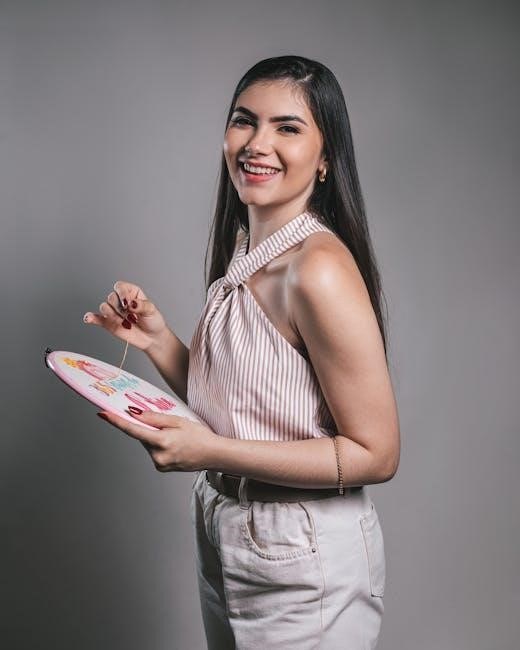
How to Read an Embroidery Thread Color Chart
Embroidery thread color charts organize colors by number and family, making it easy to identify and match thread hues․ Use PDF charts to preview colors accurately and plan embroidery projects effectively․
3․1 Understanding Color Codes and Numbers
Embroidery thread color charts use specific codes and numbers to identify hues, ensuring consistency․ For example, DMC threads are labeled with unique numbers, while others may use alphanumeric codes․ These codes are organized by color families, making it easier to locate matching shades․ PDF charts often include swatches with corresponding numbers, allowing embroiderers to preview and select threads accurately․ Understanding these codes helps in substituting threads or matching fabric colors seamlessly, ensuring precise embroidery results․ Always cross-reference codes with manufacturer guidelines for accuracy․
3․2 Matching Thread Colors to Fabric
Matching embroidery thread colors to fabric is crucial for harmonious designs․ Use PDF color charts to preview thread hues and compare them with fabric swatches․ Natural lighting ensures accurate color perception․ Organize threads by color families to simplify selection․ Consider fabric texture and dye lots, as these can affect how thread colors appear․ For precise matches, refer to manufacturer guidelines or conversion charts․ This step ensures embroidery blends seamlessly with the fabric, creating a professional finish․ Always test thread colors on scrap fabric before starting a project․
3․3 Using Color Families for Coordinated Designs
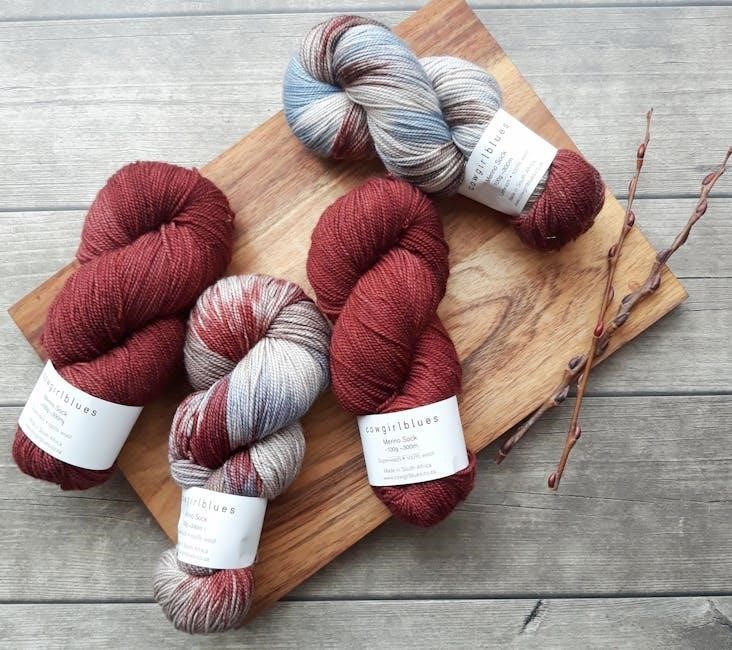
Color families in embroidery thread charts help create harmonious designs․ By grouping similar hues, charts simplify selecting threads that complement each other․ Start with a base color, then add complementary shades for depth․ Use PDF charts to visualize how colors interact․ This approach ensures designs are balanced and visually appealing․ Always test thread colors on fabric to confirm harmony․ Organizing threads by color families saves time and enhances creativity, making it easier to achieve professional-looking embroidery results every time․
Popular Embroidery Thread Manufacturers
Leading brands like DMC, Anchor, Madeira, and Cosmo offer high-quality threads with comprehensive color charts, aiding embroiderers in selecting the perfect hues for their projects․
4․1 DMC (Dollfus-Mieg & Cie)
DMC, a renowned embroidery thread manufacturer, offers a wide range of colors and a detailed color chart․ Their threads are organized by color families, making it easy to select coordinating hues․ DMC’s color chart is widely used and available in PDF format, allowing embroiderers to plan projects efficiently․ Known for their high-quality threads, DMC provides consistent color accuracy, ensuring vibrant and professional results․ Their charts are indispensable for matching thread colors to fabric, making DMC a favorite among embroiderers worldwide․
4․2 Anchor Threads
Anchor Threads is a well-known brand offering a vast range of embroidery threads with a comprehensive color chart․ Their PDF color chart provides embroiderers with a detailed guide to select threads, ensuring precise color matching․ Known for their high-quality threads, Anchor offers consistent color accuracy and durability․ The chart is organized by color families, making it easy to coordinate hues for projects․ Anchor Threads are popular among embroiderers for their vibrant colors and reliability, making their color chart a valuable resource for both beginners and professionals․
4․3 Madeira Threads
Madeira Threads are renowned for their exceptional quality and extensive color range․ Their embroidery thread color charts, available in PDF format, offer a detailed guide for selecting threads․ Madeira threads are known for their soft sheen and durability, making them ideal for various embroidery techniques․ The color chart is organized by color families, allowing embroiderers to easily find matching hues․ Madeira also offers eco-friendly options, catering to environmentally conscious crafters․ Their threads are widely used in both hand and machine embroidery, ensuring vibrant and long-lasting results for any project․
4․4 Cosmo Threads
Cosmo Threads are popular for their vibrant colors and durability, making them a favorite among embroiderers․ Their color charts, available in PDF, offer a wide range of hues for precise color matching․ Cosmo threads are known for their smooth texture and resistance to fading, ensuring long-lasting embroidery results․ They cater to both hand and machine embroidery, providing consistent quality․ While not as widely used as DMC or Anchor, Cosmo threads are valued for their unique color palette and eco-friendly options, making them a great choice for sustainable embroidery projects․
Embroidery Thread Conversion Charts
Embroidery thread conversion charts are essential for matching colors across brands like DMC, Anchor, and Cosmo․ They ensure consistency and accuracy in thread selection for embroidery projects․
5․1 DMC to Anchor Thread Conversion
DMC to Anchor thread conversion charts are invaluable for embroiderers needing to switch thread brands․ These charts map DMC color codes to their Anchor equivalents, ensuring seamless color matching․ Available as PDFs, they provide a quick reference for projects requiring specific hues․ By using these charts, embroiderers can maintain consistency and accuracy in their work, whether stitching by hand or machine․ This resource is especially handy for those who prefer Anchor threads but have DMC color references, saving time and reducing guesswork in thread selection․
5․2 Madeira to DMC Thread Conversion
Madeira to DMC thread conversion charts are essential for embroiderers who need to translate Madeira thread colors to DMC equivalents․ These charts, often available as PDFs, provide a detailed mapping of color codes, ensuring accurate thread substitution․ They are particularly useful for projects that specify DMC colors but require Madeira threads․ By using these charts, embroiderers can maintain color consistency and achieve the desired aesthetic․ This resource is a time-saver, eliminating guesswork and ensuring precise color matching for both hand and machine embroidery projects․
5․3 Cosmo to Anchor Thread Conversion
Cosmo to Anchor thread conversion charts are invaluable for embroiderers needing to switch between these brands․ These charts, often in PDF format, map Cosmo thread colors to their Anchor equivalents, ensuring seamless color transitions․ They are especially useful for projects requiring specific hues from either brand․ By referencing these charts, embroiderers can maintain color accuracy and consistency, whether working on hand or machine embroidery․ This tool simplifies thread substitution, saving time and ensuring that designs retain their intended vibrancy and aesthetic appeal․
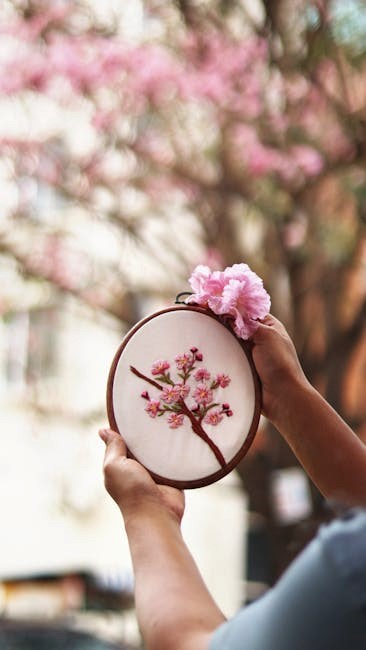
Designing a Custom Embroidery Thread Color Chart
Creating a custom embroidery thread color chart involves selecting hues for specific projects, using PDF templates, and organizing colors digitally for easy reference and coordination․
6․1 Choosing Colors for a Specific Project
When selecting colors for a project, consider the design, fabric, and desired aesthetic․ Use embroidery thread color charts to preview hues and ensure compatibility․ PDF charts offer a convenient way to visualize and match colors․ Start by identifying the dominant colors in your design, then explore complementary shades․ Tools like embroidery software can help refine your palette․ Test swatches on fabric to confirm accuracy․ This step ensures a cohesive and visually appealing final result, making color selection a foundational part of embroidery success․
6․2 Creating a Palette from Scratch
Building a custom embroidery palette from scratch involves selecting colors that harmonize and reflect your project’s theme․ Start by choosing a base color, then add complementary or analogous hues using embroidery thread color charts․ PDF charts provide a visual reference, making it easier to experiment․ Consider the fabric’s tone and the design’s complexity․ Tools like embroidery software can help refine your palette․ Test swatches on fabric to ensure accuracy․ This process allows for unique, personalized designs that stand out, ensuring your embroidery project is truly one-of-a-kind․
6․3 Digitally Designing a Color Chart
Digital tools simplify the process of creating custom embroidery thread color charts․ Start by selecting colors from embroidery thread PDF templates or software․ Use embroidery software to input color codes and generate a visual chart․ Mobile apps can also assist in color selection and matching․ Once designed, save the chart as a PDF for easy reference․ This method ensures precision and efficiency, allowing embroiderers to experiment with color combinations digitally before committing to thread purchases or stitching․
Digital Tools for Embroidery Thread Color Charts
Digital tools like PDF templates, embroidery software, and mobile apps simplify color chart creation and matching․ These resources help embroiderers organize and visualize thread colors efficiently for projects․

7․1 PDF Color Chart Templates
PDF color chart templates are downloadable resources that organize embroidery thread colors visually․ They often include high-resolution images and precise color codes, ensuring accuracy․ These templates are available from manufacturers like DMC and Madeira, offering a convenient way to plan projects․ Users can print them in color to match threads to fabric seamlessly․ PDF templates also allow embroiderers to create custom palettes or adjust existing ones, making them indispensable for both hand and machine embroidery․ They simplify color coordination and inspire creative designs․
7․2 Embroidery Software for Color Matching
Embroidery software offers advanced tools for precise color matching, allowing users to select threads that align with their project needs․ Many programs include color picker features and real-time previews, enabling embroiderers to adjust hues and create custom palettes․ These tools often integrate with PDF color charts, ensuring consistency between digital designs and physical thread selections․ By streamlining color coordination, embroidery software enhances creativity and accuracy, making it an essential resource for both hand and machine embroidery projects․ It simplifies the process of achieving professional-grade results․
7․3 Mobile Apps for Thread Color Selection
Mobile apps are invaluable tools for embroiderers, offering instant access to thread color charts and selection features․ Apps like those for DMC and Anchor threads allow users to browse and match colors on the go․ Many apps support PDF imports, enabling seamless integration with embroidery thread color charts․ They often include features like color picker tools, real-time previews, and the ability to create custom palettes․ These apps are particularly useful for matching thread colors to fabric swatches or design elements, ensuring precise and cohesive results for embroidery projects․

Storage and Organization Tips
Organize embroidery threads by color families using thread cards or charts․ Store them in a cool, dry place to maintain quality and color accuracy over time․
8․1 Organizing Threads by Color Families
Organizing embroidery threads by color families simplifies project planning and reduces waste․ Use thread cards or charts to categorize threads, ensuring easy access and a visually appealing setup․ Store threads in a cool, dry place to preserve color accuracy and quality․ This method also helps in quickly identifying missing or needed colors, enhancing efficiency in embroidery projects․ Proper organization ensures threads remain tidy and protected, maintaining their vibrancy and usability over time;
8․2 Using Thread Cards and Charts for Storage
Thread cards and charts are essential for efficient storage and organization․ Each card can hold multiple thread spools, keeping them tidy and protected from dust․ PDF color charts can be printed and used to label threads, ensuring easy identification․ This system prevents tangling and fading, while maintaining thread quality․ By storing threads on cards or in charts, embroiderers can quickly locate specific colors, enhancing workflow and project efficiency․ This method also helps in maintaining a clean and organized workspace, ideal for both hobbyists and professionals․
8․3 Maintaining Thread Quality and Color Accuracy
Maintaining thread quality and color accuracy is crucial for embroidery projects․ Store threads in a cool, dry place, away from direct sunlight to prevent fading․ Use airtight containers or bags to protect from dust and moisture․ Handle threads gently to avoid tangling or creasing․ Regularly clean and organize threads using PDF color charts as a reference for accurate color matching․ This ensures consistent hues and prevents color degradation, keeping your embroidery materials in pristine condition for future use․
Applications of Embroidery Thread Color Charts

Embroidery thread color charts are essential for hand embroidery, machine embroidery, cross-stitch, and quilting․ They help in selecting matching thread colors, ensuring vibrant and professional-looking designs consistently․
9․1 Hand Embroidery Projects
Embroidery thread color charts are indispensable for hand embroidery projects, ensuring precise color matching and consistency․ They allow embroiderers to plan and visualize designs effectively․ By referencing PDF charts, creators can select threads that complement fabric tones, enhancing the overall aesthetic․ These charts also aid in experimenting with new color combinations, enabling the creation of intricate, personalized patterns․ Whether stitching floral motifs or geometric designs, color charts streamline the process, making hand embroidery more accessible and enjoyable for crafters of all skill levels․
9․2 Machine Embroidery Designs
Embroidery thread color charts are essential for machine embroidery designs, ensuring precise color consistency and professional results․ By referencing PDF charts, embroiderers can easily match thread colors to their digital designs․ These charts help in selecting the right hues for intricate patterns and logos, preventing color mismatches․ They also enable the creation of vibrant, multi-color designs with accuracy․ Whether embroidering logos or decorative elements, color charts streamline the process, making machine embroidery more efficient and visually appealing for both personal and commercial projects․
9․3 Cross-Stitch and Needlepoint
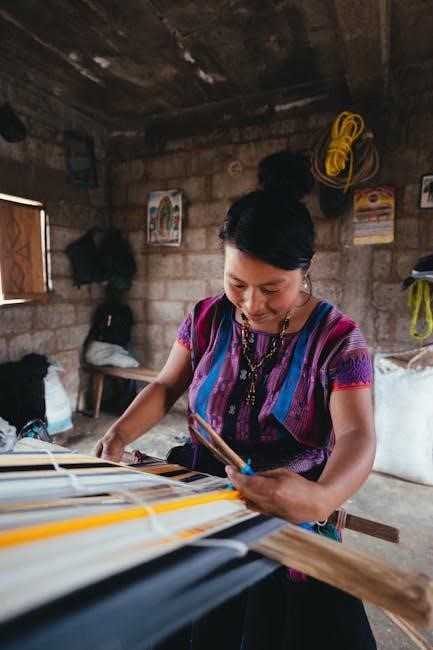
Embroidery thread color charts are indispensable for cross-stitch and needlepoint projects, providing a precise guide for thread selection․ PDF charts offer a convenient way to view and print color palettes, ensuring accurate thread-to-fabric matching․ They help embroiderers follow patterns faithfully, whether working on intricate designs or custom creations․ By referencing these charts, crafters can achieve vibrant, consistent results, enhancing the beauty of their stitching․ This tool is especially valuable for ensuring color harmony in detailed needlework, making the embroidery process more efficient and enjoyable․
9․4 Quilting and Appliqué
Embroidery thread color charts are essential for quilting and appliqué projects, offering a detailed guide for selecting thread colors that complement fabric hues․ PDF charts provide a convenient way to plan and visualize color schemes, ensuring seamless integration of embroidery into quilting designs․ They help crafters achieve precise color coordination, enhancing the visual appeal of appliqué and quilting patterns․ By referencing these charts, quilters can maintain consistency and harmony in their work, making embroidery thread color charts a vital tool for creating professional-looking results․
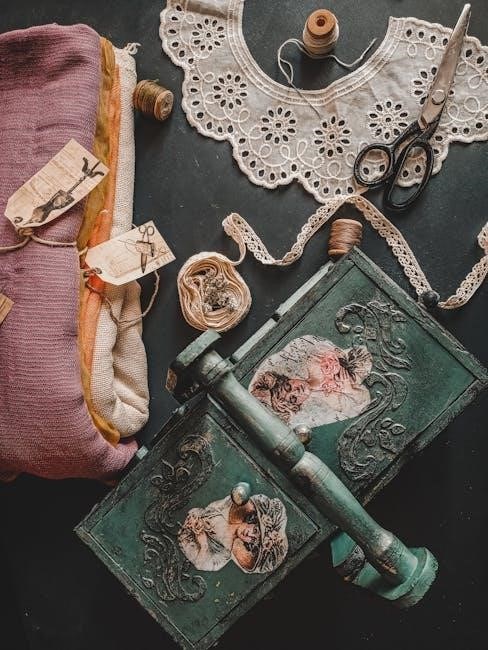
Future Trends in Embroidery Thread Color Charts
Future trends include sustainable threads, customizable digital charts, and AI integration for precise color matching, enhancing creativity and efficiency in embroidery projects․
10․1 Sustainable and Eco-Friendly Threads
The embroidery industry is shifting toward sustainable threads made from organic cotton, recycled polyester, and bamboo․ These eco-friendly options reduce environmental impact while maintaining vibrant colors․ Natural dyes and biodegradable materials are gaining popularity, offering embroiderers ethical choices․ Digital color charts now include filters for sustainable threads, helping creators make environmentally conscious decisions․ This trend aligns with the growing demand for eco-responsible crafting supplies, ensuring embroidery remains a creative and sustainable art form for future generations․
10․2 Customizable Digital Color Charts
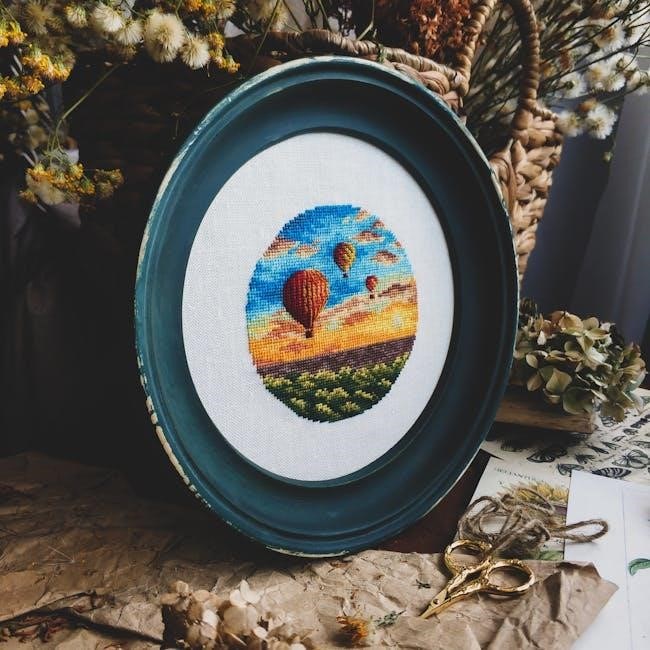
Customizable digital color charts are revolutionizing embroidery by allowing users to tailor thread palettes to specific projects․ These tools enable the creation of personalized color schemes, with features like color picker tools and real-time previews․ Popular embroidery software now offers editable PDF templates, making it easy to adjust hues and save custom charts․ This innovation empowers embroiderers to experiment with unique combinations, ensuring their designs stand out․ Digital customization also streamlines the design process, making it faster and more efficient for both beginners and professionals․
10․3 Integration with AI for Color Matching
AI is transforming embroidery by enhancing color matching accuracy and creativity․ Advanced algorithms analyze thread color charts to suggest harmonious palettes, ensuring designs are visually stunning․ AI tools can predict how colors will appear on fabric, reducing guesswork․ They also offer real-time adjustments, allowing embroiderers to tweak hues instantly․ This integration streamlines the design process, making it easier to achieve professional results․ With AI, embroiderers can explore endless color possibilities, fostering innovation and precision in their craft․
Embroidery thread color charts are essential tools for precise color selection and project planning․ PDF charts offer convenience, while digital tools enhance creativity and accuracy in embroidery work․
11․1 Summary of Key Points
Embroidery thread color charts are indispensable for selecting and matching thread colors, ensuring consistency in projects․ PDF charts provide easy access to color families and codes, aiding in precise fabric matching․ Popular manufacturers like DMC, Anchor, and Madeira offer comprehensive charts, while conversion tools help bridge color differences between brands․ Proper storage and organization of threads maintain their quality․ Future trends include sustainable threads and digital integration, enhancing creativity and efficiency in embroidery․ These resources collectively empower embroiderers to achieve professional-grade results․
11․2 Final Tips for Using Embroidery Thread Color Charts
Always use high-quality PDF color charts for accurate thread-to-fabric matching․ Organize threads by color families to streamline selection․ Cross-reference conversion charts when switching brands․ Store threads in a cool, dry place to preserve color accuracy․ Experiment with sustainable and eco-friendly options for future projects․ Utilize digital tools for custom palettes and AI-enhanced color matching․ Test thread colors on fabric scraps before starting projects․ Regularly update your charts to include new thread collections․ This ensures your embroidery remains vibrant and professional․
